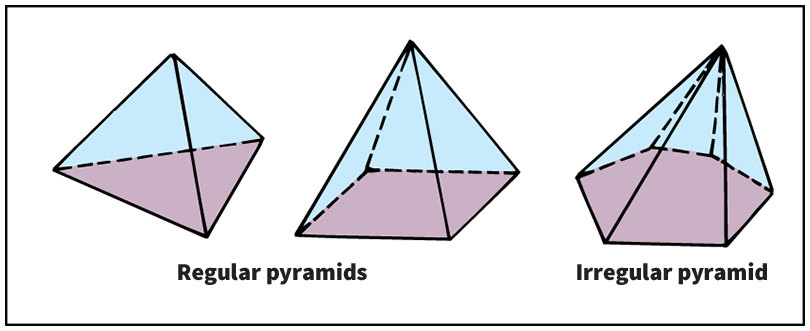Pyramid, in geometry, is a solid figure with triangular faces that meet at a common point. The base of a pyramid is a polygon. A polygon is a plane figure bounded by three or more sides. The number of faces in any pyramid equals the number of sides in its base. The point farthest from the base—at which the faces meet—is called the pyramid’s vertex.
In a regular pyramid, the faces are all congruent (equal in size and shape). Such a pyramid has a base that is a regular polygon. A regular polygon is a polygon with all sides equal and all angles equal. A perpendicular line extended from the vertex of a regular pyramid meets the base at its center.
The altitude, or height, of a pyramid is the distance along a perpendicular from the vertex to the base. The volume (V) of any pyramid may be found by using the following formula: 

In this formula, B stands for the area of the base and h for the height of the pyramid.
For a regular pyramid, the altitude of any face is called the slant height. The formula used to determine the area of the faces (L) of a regular pyramid is: 
Here, P stands for the total length of the base’s perimeter (outer boundary) and s for the slant height.
